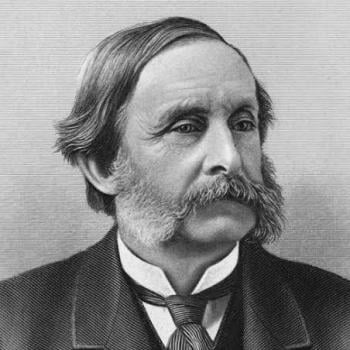The Mormon Church has worked hard for decades to raise awareness about the Book of Mormon, and finally everyone is talking about it. Unfortunately, most of the conversations are about the new Broadway musical, which is by all accounts profane, sacrilegious, wickedly funny, and surprisingly sweet. The church's response was a savvy one-liner: "The production may attempt to entertain audiences for an evening, but the Book of Mormon as a volume of scripture will change people's lives forever by bringing them closer to Christ."
Despite the fact that the Book of Mormon (the scripture) is the most widely published work ever to come out of the Western Hemisphere, it is somewhat difficult to read and make sense of. Here is what everyone should know, along with a few common misconceptions:
1) Joseph Smith dictated the book to scribes during a three-month period in 1829. He claimed to have seen an angel named Moroni, who told him of an ancient record written on golden plates buried not far from Smith's house in upstate New York. He translated the plates with the help of a seer stone that witnesses said he placed in a hat, which he then put over his face. It is a strange story, to be sure, but the surviving manuscripts do show that the text was dictated aloud, one time through—which is a heck of a way to write a 600-page book.
2) Despite what one might expect from its origins, the Book of Mormon offers a coherent narrative with more than 200 named characters and 90 place names. Its chronology, internal geography, and genealogies are all quite consistent. There have been a few thousand changes made in the text since it was first published in 1830, but virtually all of them have been grammatical corrections; the narrative itself is nearly exactly what Smith first dictated.
3) The language is something like that of the King James Bible, but not as sophisticated. There is a lot of "and it came to pass" and "behold," though the current edition is much smoother than the original. Mormons are not sure why a book translated by miraculous means would have such awkward grammar. There are Bible-like stories of prophets and calamities, and several chapters from Isaiah, along with the Sermon on the Mount, are quoted directly.
4) The book relates the story of a family who left Jerusalem about 600 B.C. and was led by God to the New World. It tracks the history of their descendants for a thousand years, after which the Nephites, who had once been righteous, were wiped out by their corrupt kinsmen, the Lamanites. It is not an account of the Ten Lost Tribes, who would have been carried off by the Assyrians more than a century earlier.
5) The theology is not far from orthodox Christianity, aside from the claim of extra-biblical revelation. Nephite prophets preached faith, repentance, baptism, the Holy Spirit, and the atonement of Christ, along with the need for virtuous living and compassion for the unfortunate. Jesus himself, after his resurrection, visited the New World for three days. What is odd is that the Nephites believed these doctrines, through revelation, centuries before Christ's birth. For Latter-day Saints, it is exhilarating to have evidence that God's work was not restricted to Palestine; he revealed himself at various times and places in history.
6) Most of the more distinctive features of Latter-day Saint doctrine and practice came after the Book of Mormon, which does not espouse polygamy, esoteric temple ceremonies, sacred undergarments, eternal marriage, or the plurality of gods. For example, the Book of Mormon does not state that the Garden of Eden was in Missouri. Although there are a few verses that refer to dark skin as a curse, the narrative takes pains to emphasize times when the darker Lamanites were more righteous than the lighter Nephites. The priesthood ban for blacks was a separate issue; Indians were never under such a ban, despite their assumed connection to the Lamanites.
7) The book is rather vague about its geography. It speaks of a Land Northward and a Land Southward, joined by a narrow neck of land. Early Latter-day Saints thought that it was describing North and South America, but more careful readings demonstrate that the events had to take place in a much smaller geographical area. Mormon scholars now believe Mesoamerica is the most likely location, but there is no direct archaeological evidence for any of this. Latter-day Saints also once assumed that the Lamanites were the primary ancestors of the American Indians. DNA studies show this is not the case; fortunately for believers, the Book of Mormon itself did not claim this. References to swords, steel, and horses are still hard to explain.
8) What evidence there is for the historicity of the book comes mainly from literary analysis: the presence of non-biblical Hebraicisms and rhetorical devices such as chiasmus, and especially the complexity of the narrative. Most of the text is presented as the work of three prophet-historians: Nephi, Mormon, and Moroni. Their editorial interactions with source materials and with each other give the book depth and nuance regardless of whether it is read as history or fiction. Mark Twain famously described it as "chloroform in print"; read more carefully, it reflects a different Twain quip—like Wagner's music, it is "better than it sounds."




